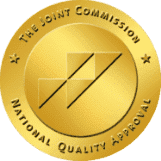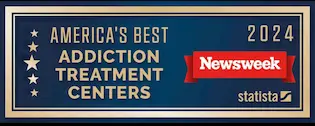- About Us
- Blog
- Areas We Serve
- Virtual IOP
- Our Programs
- Tour
- Mental Health Treatment
Medication-Assisted Treatment
- Home
- Medication-Assisted Treatment
FIND OUT IF MAT IS RIGHT FOR YOU.
What is Medication-Assisted Treatment?
Medication-assisted treatment, or MAT, is when someone uses certain medications to overcome a substance use disorder. For the proper candidates, MAT can be very effective in reducing a person’s cravings and symptoms, especially during the detoxification and withdrawal phase of recovery.
Moreover, MAT programs can help lower the risk of an overdose and minimize symptoms of withdrawal. Medications approved for this type of treatment process work to ease cravings and restore a person’s normal bodily functions. MAT integrates a “whole patient” approach and should be unique to each patient.
The Facts on MAT
According to SAMHSA, approximately 2 million people suffered from opioid use disorder in 2018. However, MAT programs have been shown to reduce the need for inpatient detoxification services and improve treatment retention and patient survival rates.
Studies also show that combining MAT with other treatment options, such as behavioral therapies, greatly increases the retention rate for those in addiction recovery. According to the Journal of Substance Abuse Treatment, “Patients who reported compliance with their medication at 1 and 6 months following residential treatment had significantly higher abstinence rates than patients who reported noncompliance.”
Not only does MAT give way to greater opportunity for a higher quality of life, but it helps save lives every year. FDA-approved medications used to treat opioid use disorders decrease the overall fatality rate of those struggling with addiction by 50% or greater.
When to Consider MAT
MAT is a process that should only be considered under medical supervision. This is especially important when considering the risks involved with drug detox and withdrawal.
MAT success is optimized in accordance with counseling, behavioral therapies, and even in conjunction with support groups. MAT includes a combination of non-drug tools and patient-specific medications to suppress the urges induced by addiction. MAT does not provide a single drug that is a cure-all for substance misuse, but rather, a series of steps that can pave the way for sobriety.
Medication-Assisted Treatment is designed for those who have not only an unyielding desire to regain sobriety, but an unwavering commitment to regaining autonomy over their lives.
Seeking Medication-Assisted Treatment Opportunities
MAT is a treatment opportunity for those willing to work with a team of medical professionals in order to obtain wellness. If you or your loved one is considering Medication-Assisted Treatment, it is vital that you consult a licensed doctor or a professional working at a treatment facility, such as Iris Healing®.
Common Types of MAT Medications
There are several types of medications that are most commonly used within MAT programs.
Methadone
Methadone is an opioid agonist. Methadone medication-assisted treatment involves using this medication to overcome the effects of opioid use disorder. Methadone reduces opioid cravings and blocks the effects of opioids.This type of treatment is also usually provided in specialty methadone clinics.4
Buprenorphine
Buprenorphine is another medication commonly used in the detoxification stage of medication-assisted treatment programs. It is a long-acting opioid drug that can replace shorter-acting opioids that a person might be addicted to, thereby reducing withdrawal symptoms and allowing a person to taper off opioids more comfortably.
Certain brands of buprenorphine, such as Subutex, are used for the detoxifications stage only. Other brands such as Sublocade are used for long-term maintenance of opioid sobriety.
Naltrexone
This non-opioid, non-addictive medication is often used in the treatment of alcohol use disorder or opioid use disorder. This medication helps to block the effects of opioids and reduce craving, and it reduces the urge to drink in those that struggle with alcoholism.
Vivitrol
Vivitrol (naltrexone for extended-release injectable suspension) intramuscular is an FDA-approved medication that assists in the treatment of alcohol and opioid dependence. Vivitrol is often used to prevent relapse of opioid dependence, and is administered after the detoxification process has concluded.5
Suboxone
Suboxone – also known by its generic name of buprenorphine-naloxone – is commonly used in medication-assisted treatment programs. Suboxone inhibits the effects of opioids. Suboxone is composed of two MAT based medications: Buprenorphine and Naloxone.6 Naloxone is deemed by the World Health Organization (WHO) to be one of the medications essential to a functioning health care system.7
Sublocade
This substance can treat those with moderate to severe opioid use disorder. Sublocade is an injection that continually releases the medicine buprenorphine at sustained levels, without the common real daily ups and downs. In a clinical study, patients treated with Sublocade had a treatment success of over 10x the likelihood of those who didn’t administer MAT.
A Closer Look: Sublocade vs. Suboxone
Although Sublocade and Suboxone are both medications used to treat opioid use disordere, the effects of each brand can vary greatly from one another. Sublocade is made up of solely buprenorphine while Suboxone is a mix of buprenorphine and naloxone.
The two medications can also have varying side effects.
Sublocade Side Effects
Some common side effects of Sublocade include:8
- Back pain
- Chillds
- Coughing or hoarseness of the throat
- Difficulty urinating or with bowel movements
- Runny or stuffy nose
- Sneezing
- Issues with sleeping schedule
Less common side effects of Sublocade include:8
- Skin irritation
- Irregular heartbeat
- Unusual drowsiness
- Unusual weight gain or weight loss
- Headaches
- Dizziness
- Fever
- Blurred vision
- Bloating of the face or apendages
Suboxone Side Effects
Common Suboxone side effects can include:9
- Chills
- Coughing
- Dizziness
- Fever
- Excessive sweating
- Headaches
- Pain in the lower back or sides
- Difficulty urinating
Less common side effects of Suboxone may include:9
- Bloating in the face or apendages
- Diarrhea
- Trembling or twitching
- Naseau or vomiting
- Loss of appetite
- Depression
- Fainting
- Unusual weight gain or weight loss
What can MAT Help Treat?
Medication-assisted treatment is often used for the following substance use disorders:
Alcoholism: The first step to treating alcoholism is ridding the body of the substance. However, withdrawal symptoms can be severe. Disulfiram, naltrexone, and acamprosate are the most commonly used drugs in MAT for AUD.
Stimulant addiction: Those who suffer from addiction to stimulant drugs, such as meth or cocaine, may suffer from withdrawal symptoms as they wean off the substance. Certain MAT programs can minimize withdrawal symptoms to provide a safer and more comfortable detoxification process.
Opioid addiction: MAT programs are commonly used to help people overcome addiction to opioids. Certain medications can help individuals overcome addiction to short-acting opioids like heroin, morphine, and codeine as well as semi-synthetic opioids like oxycodone and hydrocodone.
Medication-Assisted Treatment in Harm Reduction
Harm reduction refers to using various tools and public health interventions to reduce the harm associated with drug use. The goal of harm reduction is not to encourage drug use, but rather to prevent the transmission of diseases caused by unsafe drug use, such as HIV, and reduce the number of overdose deaths. By providing these resources, harm reduction centers also have the chance to guide individuals struggling with addiction toward treatment options and programs such as medication-assisted treatment.
Learn More About MAT with Iris Healing®
If you or a loved one is struggling to overcome a substance use disorder, our team at Iris Healing® is here to help. We can provide medication-assisted treatment to ease cravings or withdrawal symptoms and provide a smooth start to the recovery process.
Contact us today to learn more about our treatment programs.
Resources
- https://www.samhsa.gov/medication-assisted-treatment
- https://www.sciencedirect.com/science/article/abs/pii/S0740547218300552
- https://dss.sd.gov/formsandpubs/docs/BH/BHAO10_MAT_Brochure.pdf
- https://www.fda.gov/drugs/information-drug-class/information-about-medication-assisted-treatment-mat
- https://www.vivitrol.com/opioid-dependence
- https://www.asam.org/docs/default-source/education-docs/mat-program-overview_2-12-2019239e2b9472bc604ca5b7ff000030b21a.pdf?sfvrsn=93224bc2_0
- https://www.who.int/groups/expert-committee-on-selection-and-use-of-essential-medicines/essential-medicines-lists
- https://www.drugs.com/sfx/sublocade-side-effects.html
- https://www.drugs.com/sfx/suboxone-side-effects.html
Iris Healing® strives to be diligent and prompt in updating the information available on our website. Please note, however, that our treatment modalities and protocols are subject to change at any time. For the most up-to-date details regarding our treatment offerings or other protocols, please contact us: (844)663-4747





